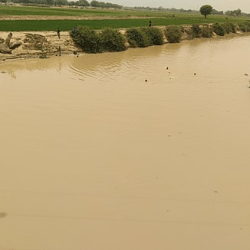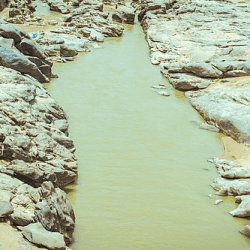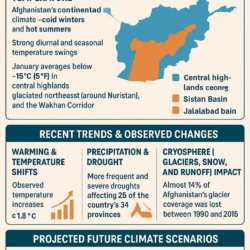Waterlogging is a significant challenge in sugarcane farming, as it negatively impacts soil structure, crop growth, and overall productivity. Effective drainage and management strategies can help mitigate the effects of waterlogging and create optimal conditions for sugarcane cultivation.
Understanding Farm Waterlogging
Waterlogging occurs when excess water accumulates on or within the soil, leading to oxygen deficiency and poor crop performance. It is especially detrimental to sugarcane, which requires well-drained soils to thrive.
Basic Causes of Farm Waterlogging
- Heavy Rainfall or Flooding:
- Intense rains or flooding can saturate the soil, leaving little room for oxygen exchange.
- Poor Drainage Systems:
- Clogged or poorly designed drainage systems hinder water movement, causing water to stagnate.
- Compacted or Impermeable Soils:
- Soils with low permeability or compaction prevent water from infiltrating, leading to surface water accumulation.
- Inadequate Land Preparation or Grading:
- Uneven fields or low-lying areas collect water, exacerbating waterlogging issues.
Impact of Waterlogging on Sugarcane Production
- Reduced Root Aeration: Excess water suffocates roots, impairing nutrient uptake.
- Soil Degradation: Prolonged saturation breaks down soil structure.
- Increased Pests and Diseases: Wet conditions favor fungal growth and pests.
- Lower Yields: Stunted growth and poor tillering result in reduced sugarcane productivity.
Steps to Drain a Waterlogged Farm
1. Assess Drainage Needs
- Identify problem areas using field surveys and topographic maps.
- Evaluate soil permeability and natural water flow patterns.
2. Install an Effective Drainage System
A. Surface Drains:
- Open ditches or grassed waterways channel excess water away from the field.
- Use these in areas prone to surface water accumulation.
B. Subsurface Drains:
- Perforated pipes or tile drains remove excess water from the soil profile.
- Install at an appropriate depth and spacing based on soil type and waterlogging severity.
3. Modify Field Layout
- Raised Beds or Ridges: Elevate planting areas to improve aeration and prevent root saturation.
- Laser Grading: Level the field for uniform water distribution and avoid low-lying spots.
4. Soil Management Practices
- Conservation Tillage: Reduces soil compaction and promotes water infiltration.
- Mulching: Helps regulate soil moisture and reduces surface evaporation.
5. Adjust Irrigation Practices
- Monitor soil moisture levels to avoid overwatering.
- Use water-efficient irrigation methods, such as drip irrigation, to minimize waterlogging risks.
Benefits of Proper Drainage for Sugarcane
- Improved Soil Health:
- Enhanced aeration and microbial activity.
- Higher Yields and Quality:
- Healthy root development and robust crop growth.
- Reduced Pest and Disease Risks:
- Dry soils limit fungal and pest outbreaks.
- Sustainable Farming:
- Long-term productivity through effective land management.
















